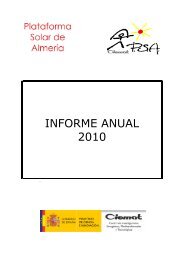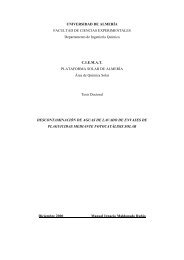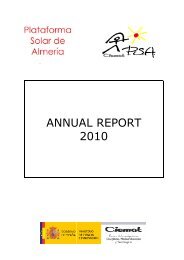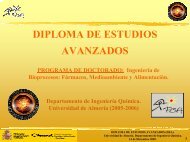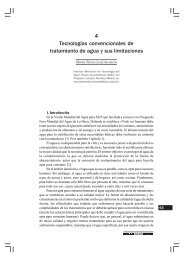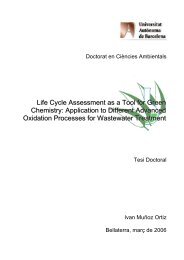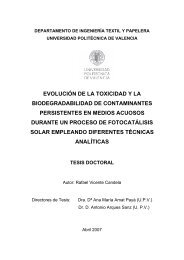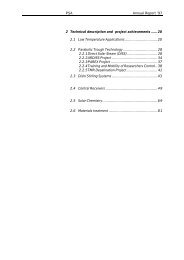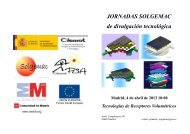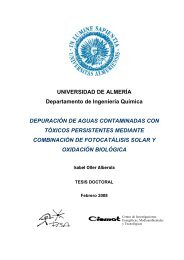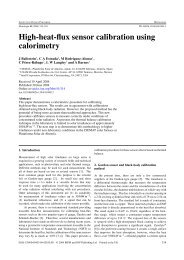Annual Report 2006 - Plataforma Solar de AlmerÃa
Annual Report 2006 - Plataforma Solar de AlmerÃa
Annual Report 2006 - Plataforma Solar de AlmerÃa
You also want an ePaper? Increase the reach of your titles
YUMPU automatically turns print PDFs into web optimized ePapers that Google loves.
PLATAFORMA SOLAR DE ALMERÍA<br />
• Minimize loss of data during<br />
calibration periods (around 1<br />
month if the equipment must be<br />
sent to the manufacturer).<br />
• Be able to increase calibration<br />
frequency as nee<strong>de</strong>d: every 6<br />
months, quarterly, monthly or<br />
even weekly.<br />
The calibration laboratory has<br />
been specially <strong>de</strong>signed for calibration<br />
over the whole 200 to<br />
2500 nm range.<br />
Figure 2.7 New Spectral Calibration<br />
Laboratory adjacent to the<br />
CESA-1 building<br />
2.12 Energy Testing of Building<br />
Components Laboratory (LECE)<br />
The Energy Testing of Building Components Laboratory (LECE) is another<br />
of the facilities at the PSA. This laboratory is part of the Bioclimatic Architecture<br />
R&D program of CIEMAT’s Renewable Energies Department and is managed<br />
directly by it. It participates in the PASLINK EEIG, a network of European<br />
laboratories with similar characteristics, which is of economic interest.<br />
The laboratory consists of four fully instrumented test cells for testing conventional<br />
and passive solar building components and, furthermore, makes use of<br />
the excellent infrastructure at the PSA for solar applications.<br />
The purpose of the LECE is to contribute to the knowledge on the energy<br />
quality of building elements through experiments <strong>de</strong>termining the thermal<br />
properties of closures, such as the global heat transfer coefficient, the solar<br />
gain factor or system response times. It also performs other types of tests<br />
among which are important because of the climatic conditions in Spain, with<br />
regard to ventilation phenomena. The knowledge of those properties can be<br />
used to improve building <strong>de</strong>sign for increased energy savings without loss of<br />
comfort and predicting their thermal behavior. LE high-precision time server<br />
CE activities may be classified as:<br />
• Experimental support for preparation of standards and regulations.<br />
• Experiments in the CIEMAT Bioclimatic Architecture R&D program.<br />
• Collaboration with and services for building materials and component<br />
manufacturers.<br />
Figure 2.15<br />
Views of the LECE: Cells, reference buildings and solar chimney<br />
30



